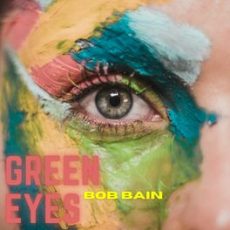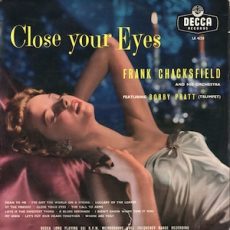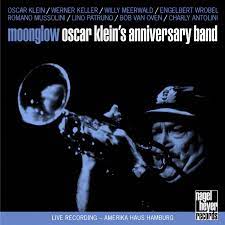
Daily Dose Of Jazz…
Bob Bain was born January 26, 1924 in Chicago, Illinois and began his professional career in the 1940s playing guitar in popular big band outfits led by Tommy Dorsey and Bob Crosby. He is credited with guitar on one of Dorsey’s biggest hits, Opus No. 1.
An unusually early adopter of the electric guitar, Bob started playing an early Gibson Les Paul model before switching to a modified 1953 Fender Telecaster. Like most jazz guitarists, he also favoured semi-acoustic models such as the Gibson L-5 and ES-150.
A long time collaborator with composer Henry Mancini, he is also credited with the guitar introduction to the theme from the popular 1950s television private detective series Peter Gunn. Bain contributed his guitar talents on another of Mancini’s significant soundtrack albums, the musical score to the movie Breakfast at Tiffany’s, as well as playing on the soundtrack to the television Western series Bonanza.
Guitarist Bob Bain, who was mainly known for his film music contributions, including Dr. Zhivago, where he played the balalaika in the score for certain scenes where Lara’s Theme is heard, died on June 21, 2018 in Oxnard, California. He was 94.
More Posts: guitar,history,instrumental,jazz,music

Daily Dose Of Jazz…
Robert Stuart Pratt was born on January 24, 1927 in Aberdeen, Scotland and was a professional musician from the age of 16, having mastered trumpet, flugelhorn, piano, drums and vocals. He served in the Royal Corps of Signals leading the Skyliners Army Dance Band.
In 1948 he joined Ken McIntosh’s outfit for a year before joining Ted Heath the following year. Due to his ability to play high and loud brought distinction to the brass section and his high note duets with Bert Ezzard became a highlight of the band’s appearances. Bobby was a mainstay with Heath until 1960.
As one of the busiest session players in Britain, Pratt found himself in high demand not only for jazz big band work but consistent work with top jazz and pop perfprmers in both record, tv and film studios. He played in the big bands of Humphrey Littelton, Eddie Harvey, Tubby Hayes, Tommy Watts, Vic Feldman, Jack Parnell, the Forty Two Big Band and the Downbeat Big Band.
Over the course of his career Bobby also recorded as a member of the Tommy Whittle Septet, The Kirchin Band, the Johnny Keating All Stars, Frank Chacksfield and Kenny Baker’s Dozen.
Trumpeter Bobby Pratt committed suicide on June 5, 1968 at the age of 41.
More Posts: drums,flugelhorn,history,instrumental,jazz,music,piano,trumpet,vocal

Daily Dose Of Jazz…
Oscar Klein was born on January 5, 1930 in Graz, Austria. His family fled the Nazis when he was young. He became known for older jazz like swing and Dixieland.
In the early Sixties he joined the famous Dutch Swing College Band in the Netherlands as first trumpeter and he is to be found on several of their recordings.
He played with Lionel Hampton, Joe Zawinul, Jerry Ricks and others. In 1996 he was honored by the Austrian President Thomas Klestil
Trumpeter Oscar Klein, who also played clarinet, harmonic and swing guitar, died on December 12, 2006 in Baden-Württemberg, Germany.
More Posts: clarinet,guitar,harmonica,history,instrumental,jazz,music,trumpet

Daily Dose Of Jazz…
Stanley William Tracey was born on December 30, 1926 in Denmark Hill, South London, England. The Second World War disrupted his formal education, and he became a professional musician at the age of sixteen as a member of an Entertainments National Service Association touring group playing the accordion, his first instrument. He joined Ralph Reader’s Gang Shows at the age of nineteen, while in the RAF and formed a brief acquaintance with the comedian Tony Hancock.
Later, in the early 1950s, he worked in groups on the transatlantic liners Queen Mary and Caronia and toured the UK with Cab Calloway. By the mid-1950s, he had also taken up the vibraphone, but later ceased playing it. During the decade he worked widely with leading British modernists, including drummer Tony Crombie, clarinettist Vic Ash, the saxophonist-arranger Kenny Graham and trumpeter Dizzy Reece.
1957 saw Tracey touring the United States with Ronnie Scott’s group, and then became the pianist with Ted Heath’s Orchestra for two years at the end of the Fifties, including a US tour with singer Carmen McRae. Although he disliked Heath’s music, he gained a regular income and was well featured as a soloist on both piano and vibes. He contributed compositions and arrangements that stayed in the Heath book for many years.
He first recorded in 1952 with the trumpeter Kenny Baker, then recorded his first album as leader in 1958, Showcase, for English Decca label and Little Klunk in 1959. From 1960 until about 1967 Stan was the house pianist at Ronnie Scott’s Jazz Club in Soho, London, which gave him the opportunity to accompany many of the leading musicians from the US who visited the club. It is Tracey on piano that film viewers hear behind Rollins on the soundtrack of the Michael Caine version of Alfie. At the same time, he became active in Michael Horovitz’s New Departures project, mixing poetry performances with jazz, where the musicians interacted spontaneously with the words.
The early 1970s were a bleak time for Tracey. He began to work with musicians of a later generation, who worked in a free or avant-garde style. He continued to work in this idiom with Evan Parker at the UK’s Appleby Jazz Festival for several years, but this was always more of a sideline for Tracey, lasting 18 years that the festival existed. Stan formed his own label In the mid-1970s titled Steam, and a number of commissioned suites. These included The Salisbury Suite, The Crompton Suite and The Poets Suite.
He led his own octet from 1976 to 1985 and formed a sextet in 1979 and toured widely in the Middle East and India. He had a longstanding performance partnership from 1978 with saxophonist Art Themen, and his own son, drummer Clark Tracey. He shared the billing with arranger Gil Evans, Sal Nistico and Charlie Rouse. He went on to record over four dozen albums as a leader or co~leader, thirty as a sideman and on two soundtracks over the course of his career.
Pianist and composer Stan Tracey, who received the honor of the Officer of the Order of the British Empire (OBE) and appointed Commander of the Order of the British Empire (CBE), transitioned from cancer on December 6,
More Posts: bandleader,composer,history,instrumental,jazz,music,piano

Daily Dose Of Jazz…
Leonard “Red” Balaban was born in Chicago, Illinois on December 22, 1929 to Barney Balaban, former president of Paramount Pictures. By the Fifties he was residing in the Florida panhandle, working as a farmer and playing in regional ensembles. He moved to New York City in the mid-1960s and held a regular gig at the Dixieland jazz club Your Father’s Mustache.
He worked extensively as a sideman, for musicians such as Wild Bill Davison, Eddie Condon, Gene Krupa, Dick Wellstood, and Kenny Davern. He opened the third incarnation of Eddie Condon’s Jazz club on W. 54th Street after arranging permission for using Eddie’s name from Condon’s widow. He co-led the house band with Ed Polcer from 1975, with whom he later shared ownership of the club. Other musicians in this outfit included Vic Dickenson, Warren Vache, and Connie Kay. The club closed in the mid-1980s.
Tubist, sousaphonist, gui Red Balaban, who also played banjo, stand-up bass, slide trombone, ukulele and rhythm guitar, transitioned on December 29, 2013 at his lakefront home in West Haven, Connecticut.
More Posts: history,instrumental,jazz,music,sousaphone,tuba



